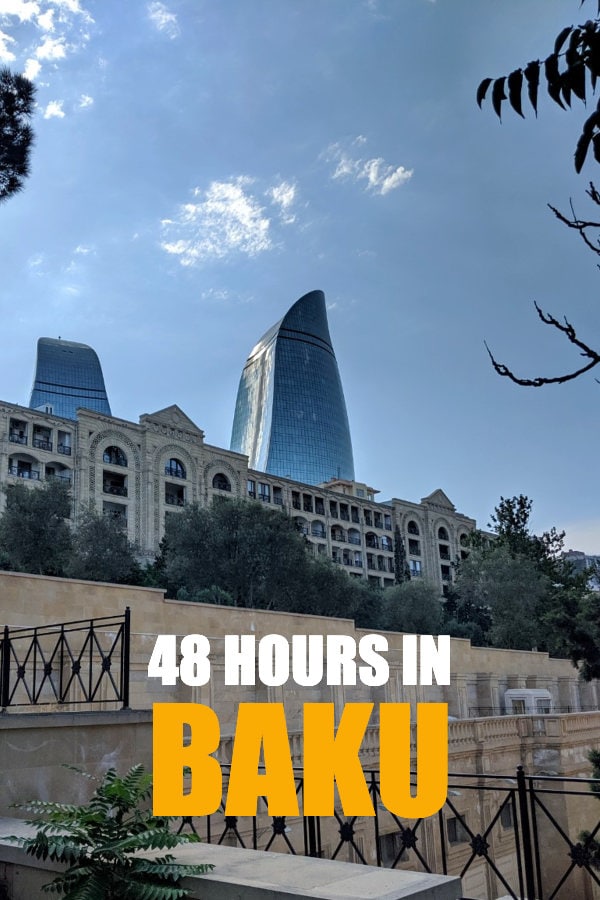Baku, the capital of Azerbaijan, is a modern metropolis at the edge of the desert and bordering the Caspian Sea. Before visiting, I knew almost nothing about the city. I visited with an open mind and a blank agenda. This travelogue and collection of Baku photos will give you an overview of the city’s attractions.
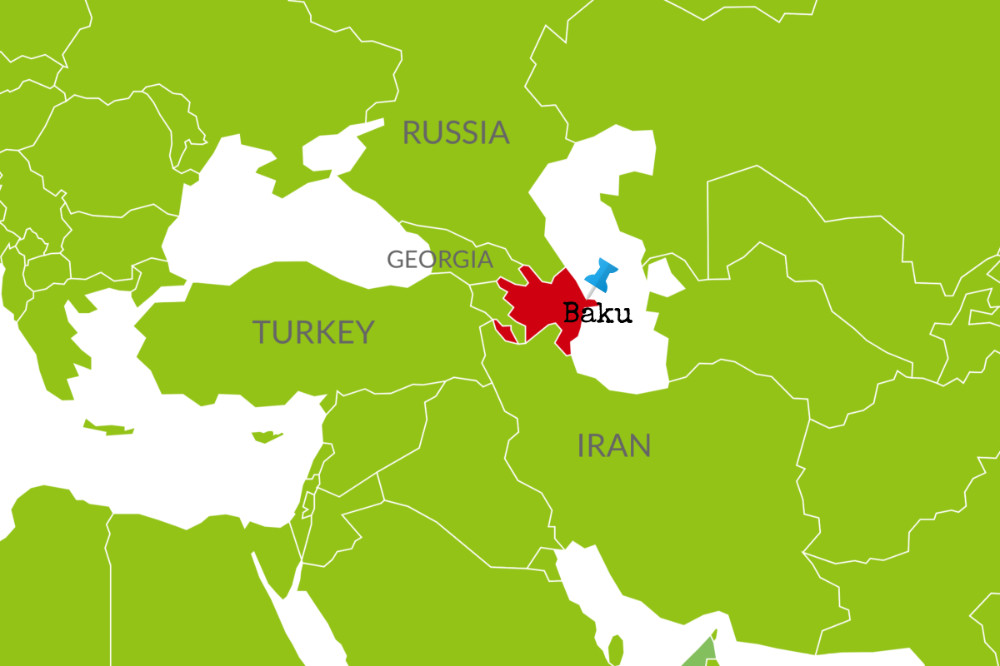
Life in Baku
The vast majority of Baku feels very modern, even if the buildings appear to be modeled on a sandstone version of Paris. Every building is that sand colour you see in Dubai. It looks like every building in every direction was built last week. You can smell the money here and expensive cars buzz around town mixed in with clapped-out Ladas and filthy old European cars.
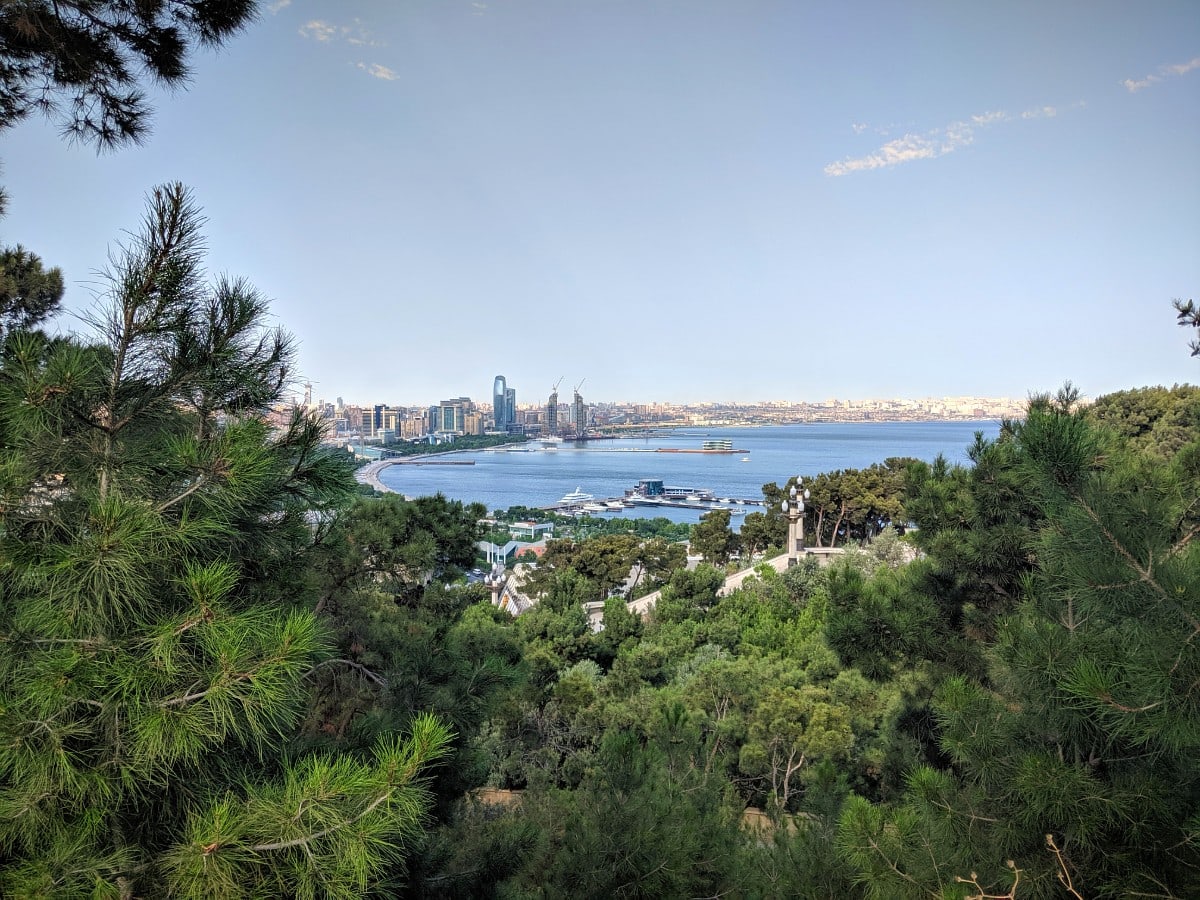
Baku has an old town, which is lovely, but it’s hard to lose yourself there due to its diminutive size. There’s a peaceful air to the city, possibly because of the calming influence of the sea.
Food is an important part of Azeri life and there’s a mix of many cultures in almost every dish in Azerbaijani cuisine. As a Muslim country, pork is not available but alcohol is widely available and the locals don’t seem to have any problem with drinking.
Azeri women rarely wear the hijab, at least not in Baku. The women are beautiful. I imagine Baku is a little like how Tehran was before the Revolution. I didn’t hear any calls to prayer during my time in the city. In fact, I saw few mosques.
What to do in Baku
Baku never ranks high on Westerners’ list of tourist destinations. But it’s worth a visit for the architecture, food, and history. 48 hours is plenty of time to get a feel for the place.
Stay near the old town as you’ll be able to walk to almost every interesting part of the city from there.
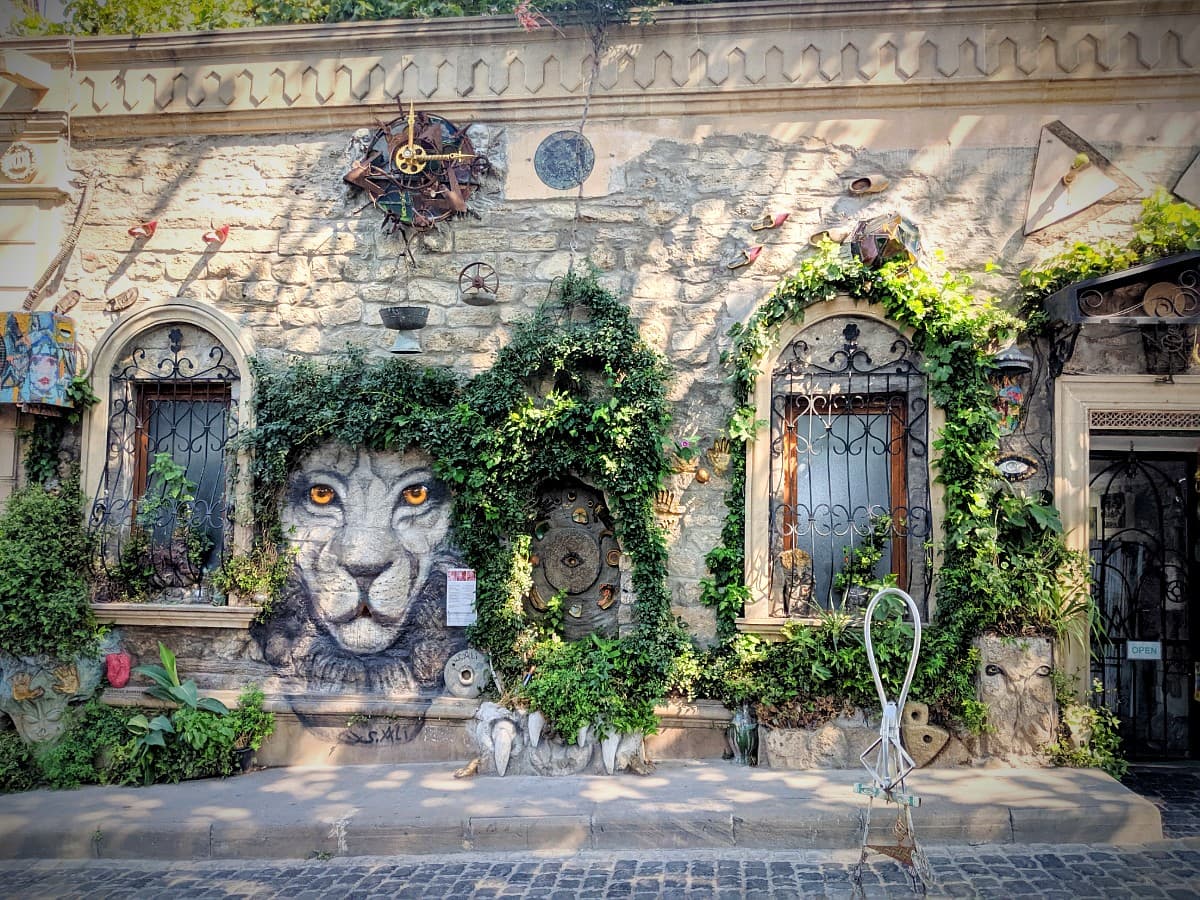
The Old Town
If you can ignore the tourist traps and hawkers (they’re not that bad, really), the old town of Baku is quite a pleasant place to spend an afternoon. Avoid the heat of midday by walking around the cool narrow stone streets reminiscent of the back streets of Barcelona, Rome, Seville, or Lisbon.
The historic old town (Icherisheher) is a step back in time from the modern city of Baku that surrounds this walled city-within-a-city. Despite the appearance of boutique stores and fancy restaurants, the Old Town has charm. People still live within the walls and businesses selling coffee, carpets, and bread function pretty much as they have for decades.
The walled city is, along with the Maiden Tower, and the Shirvanshahs’ Palace, a UNESCO World Heritage Site. According to UNESCO, the city has preserved much of its 12th-century defensive walls and is an important example of collective architecture with Zoroastrian, Arabic, Persian, Shirvani, Ottoman, and Russian influences.
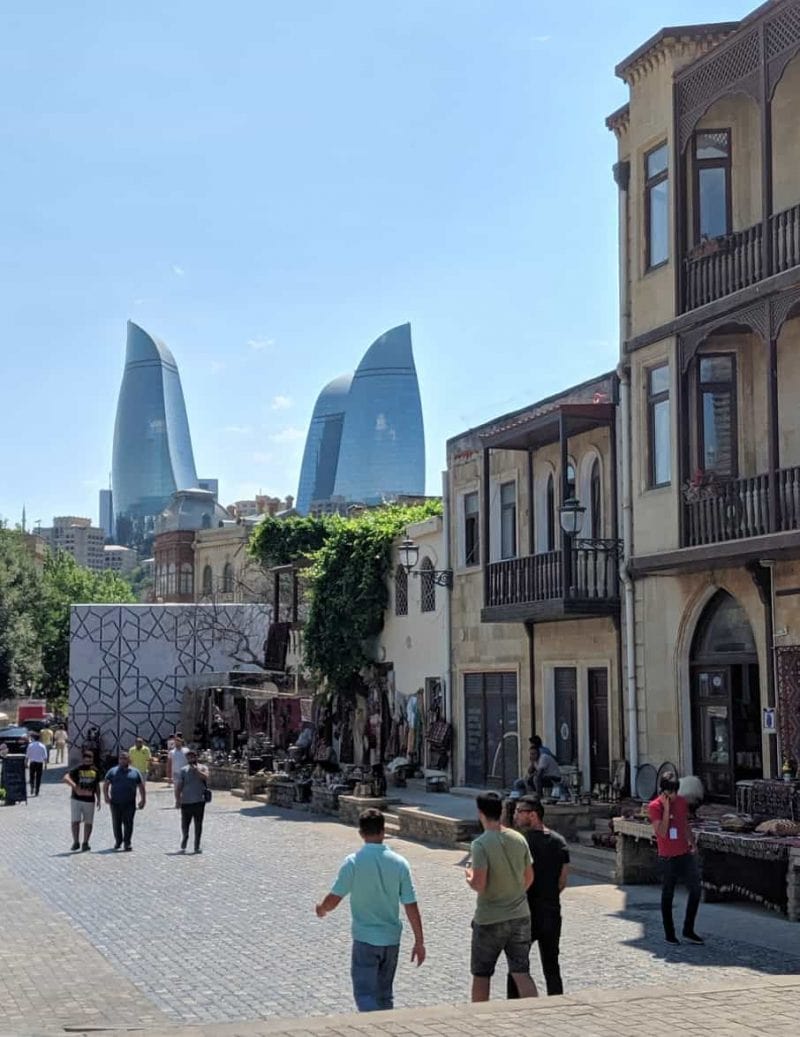
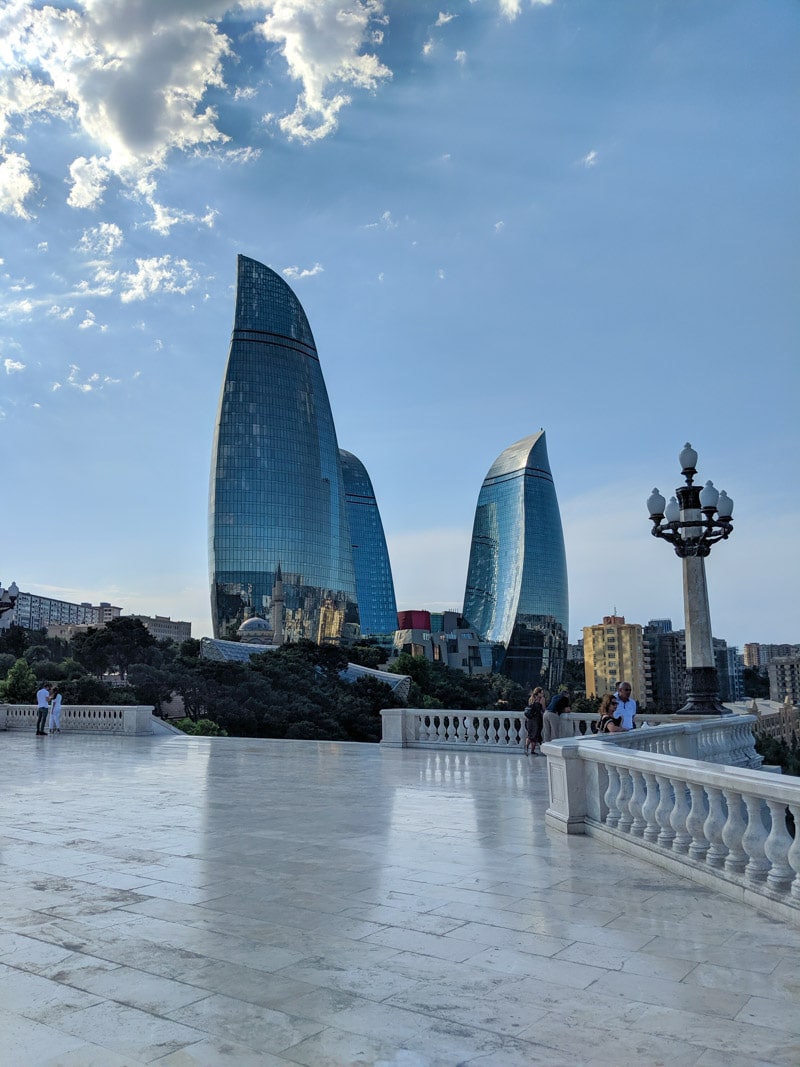
A popular thing to do is visit a caravanserai which is a type of inn that traditionally gave lodging to travelers. The days of desert travelers are long gone and the caravanserai now functions as restaurants. Most are looking for a quick tourist dollar, not repeat customers, so don’t expect amazing service and quality. But two more pleasant places to hang out and eat well are Han Restaurant and Mugam Club.
I walked the perimeter of the Old City, following the sandstone walls and imagining what life was like centuries ago. There are beautiful building facades on one side vying for attention with the modern buildings of Baku outside the walls.
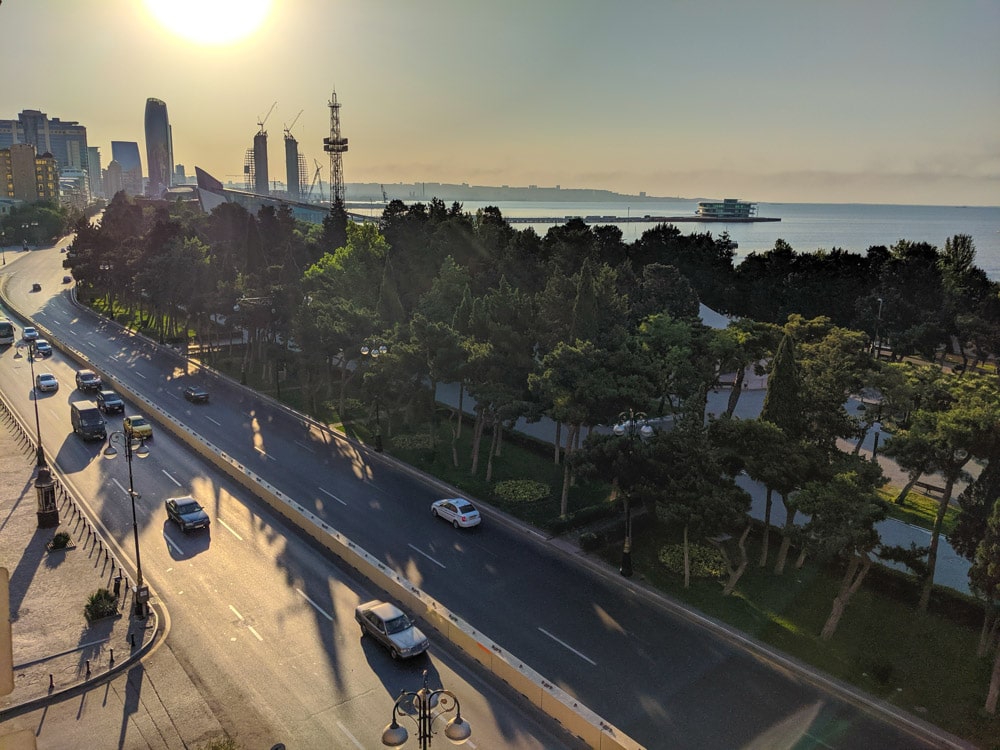
Maiden Tower
The Maiden tower might not seem like much but it has significant cultural importance. Try to imagine how the surroundings looked back when the foundations were first set, you might find yourself in some kind of One Thousand and One Nights tale.
Listed as a UNESCO Historical Monument, the tower has significant cultural importance to Azerbaijan. Its image appears on the currency and is an official national emblem. There’s even a ballet named after it.
Standing at just under 100ft tall and looking a little jaded, the tower is impressive more for its ability to endure centuries of war, weather, and invaders. Nobody really knows who build the tower, why it was constructed in this fashion, and what it was designed to do.
Pay a fee to climb to the top of the tower and get some photos of the city and the Bay of Baku.
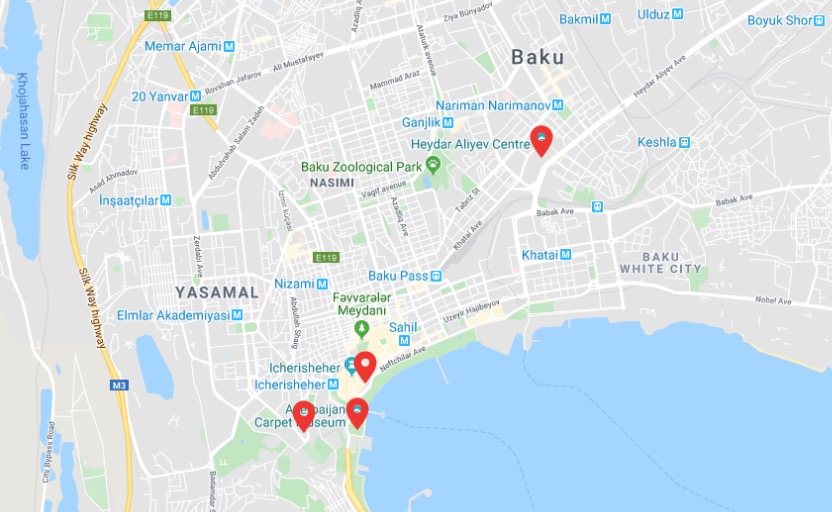
Heydar Aliyev Center
Take a cab to the Heydar Aliyev Center and try to fathom how they built such a curvy structure. As the Kim Kardashian of buildings, the Heydar Aliyev Center appears to have few straight lines and lots of exaggerated curves that can’t help but call attention.
The center is a truly impressive set of buildings that seems a little out of place in a bland suburb of Baku. However, the green grass surrounding the centre gives it a bit of separation and enhances the otherworldliness of the structures.

The center is a purpose-built cultural hub and was named after former national leader Heydar Aliyev.
The flowing nature of the walls remind me of the beautiful calligraphy in the Islamic world. The Azerbaijani alphabet doesn’t actually follow this convention (it’s based on the Latin script) but Azerbaijani culture maintains strong ties to the past. Arabic script was used for centuries before 1922, when the change occurred.
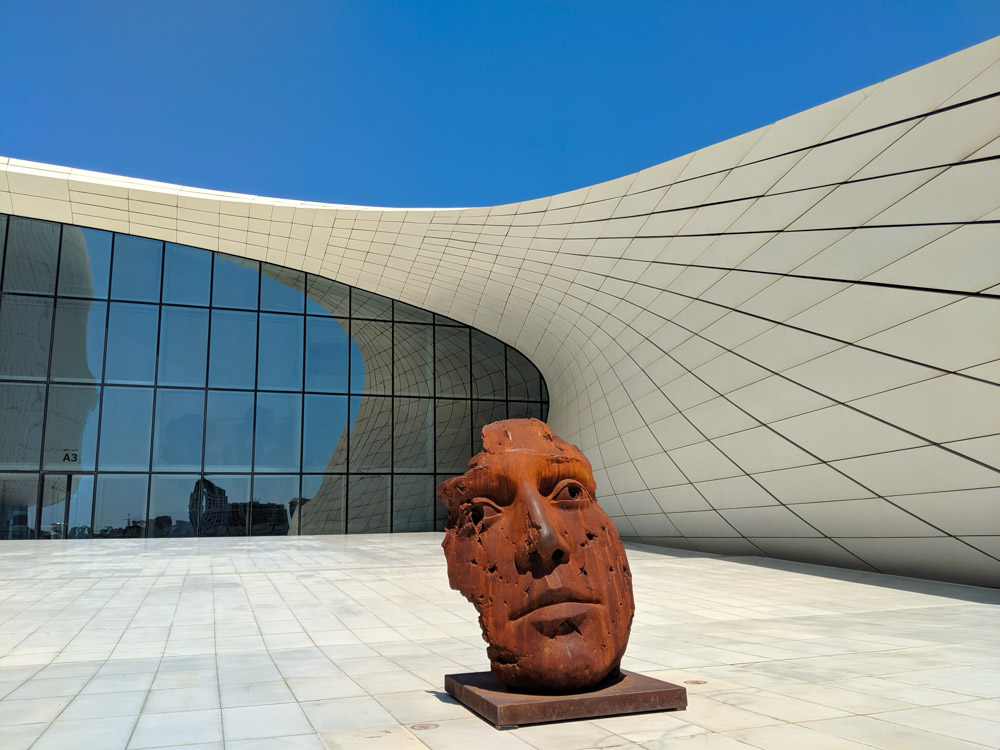
The exterior almost looks like skin pulled tight over a curved frame. The design, built to look like sheets of graph paper, came from the mind of a British-Iraqi architect called Zaha Hadid. The same architect designed many other incredible buildings around the world, including the Guangzhou Opera House in China and the Pierres Vives building in France. But none compare to the beautiful Heydar Aliyev Center.
The centre is closed on Mondays (something I learned too late) but you can explore the grounds without a ticket.
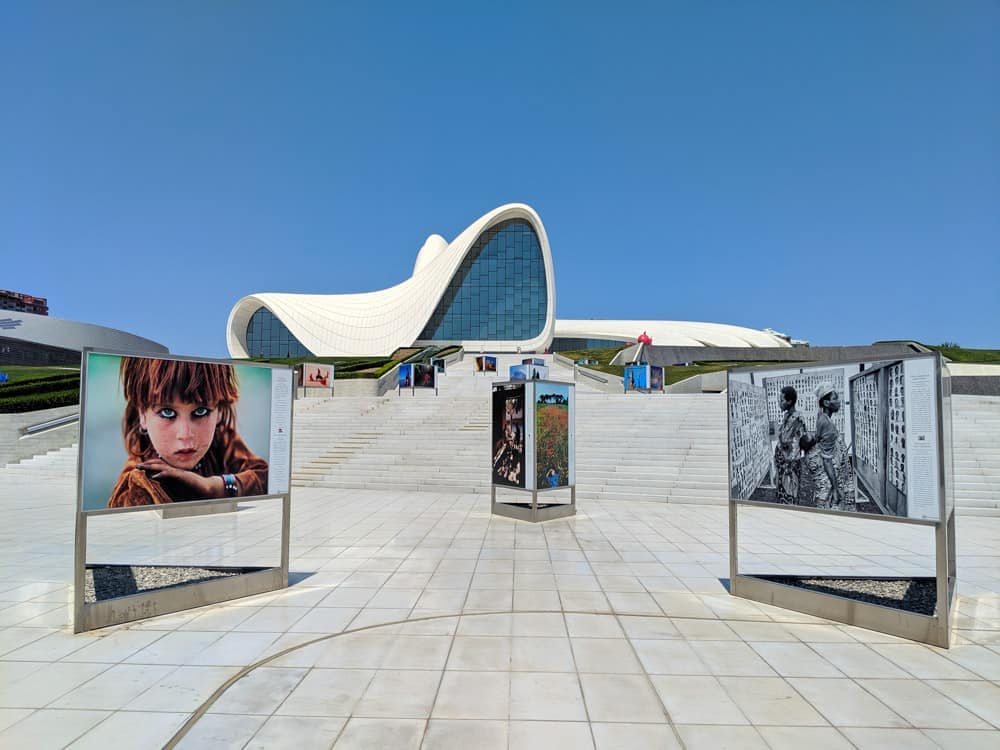
Flame Towers
As soon as you arrive in Baku, you’ll be itching to get up close to the flame towers. These shining buildings are an example of how to make skyscrapers both beautiful and representative. The flame shapes echo the flames of fire, representing the highest deity of Zoroastrianism, Ahura Mazda. But one could imagine that the flames represent the burning of oil, oil being the source of the vast wealth the country has enjoyed since the black gold was first exploited here, centuries ago.
Note: Oil has also been the source of major ecological destruction in Baku and the rest of the country. Governments greedy for revenue, let companies do whatever they wanted with waste and excess crude. But hey, they can afford to build two massive flame towers to make up for it.
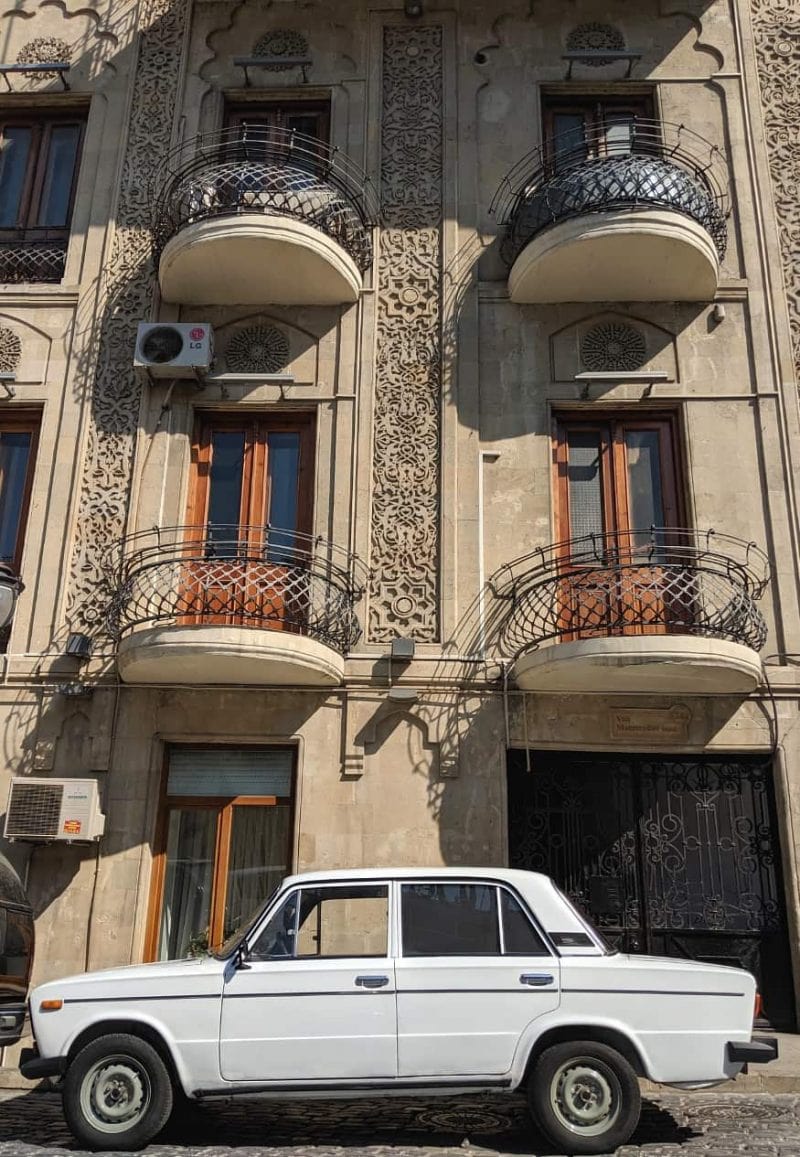
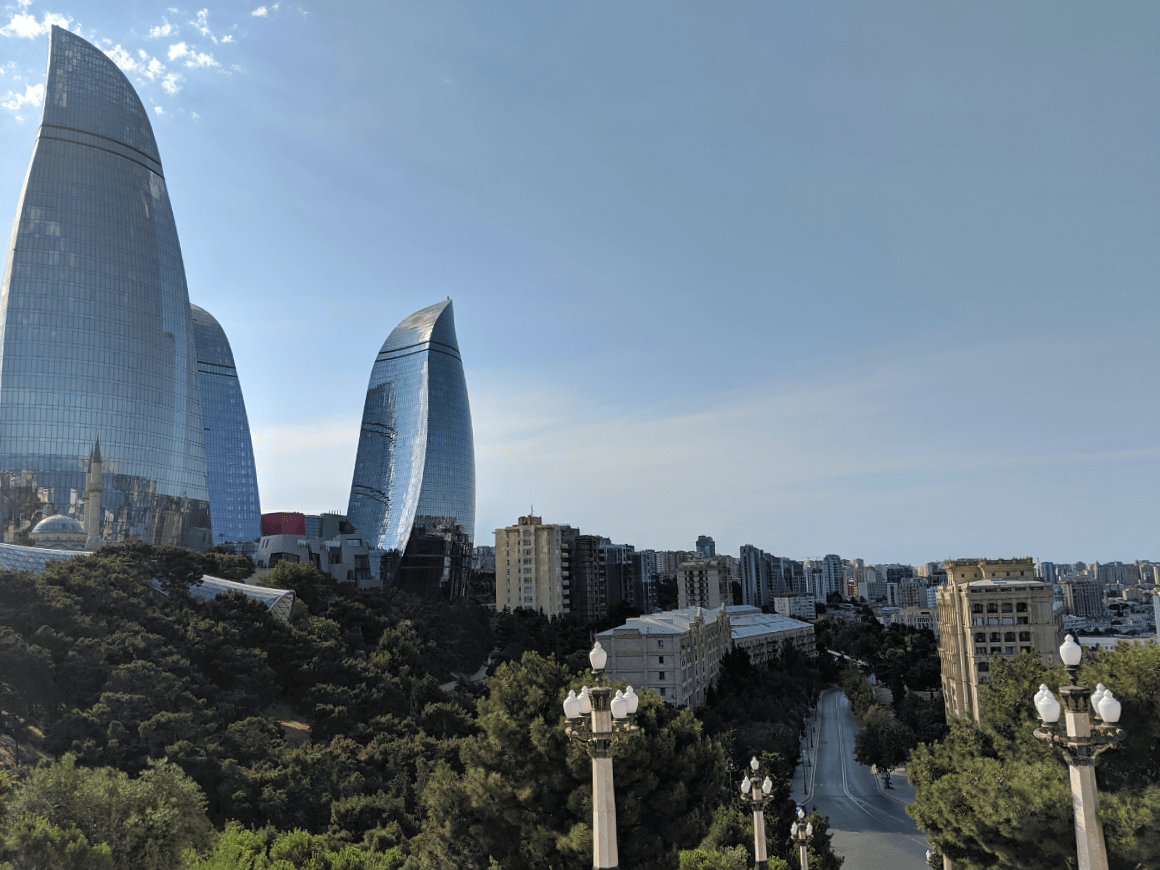
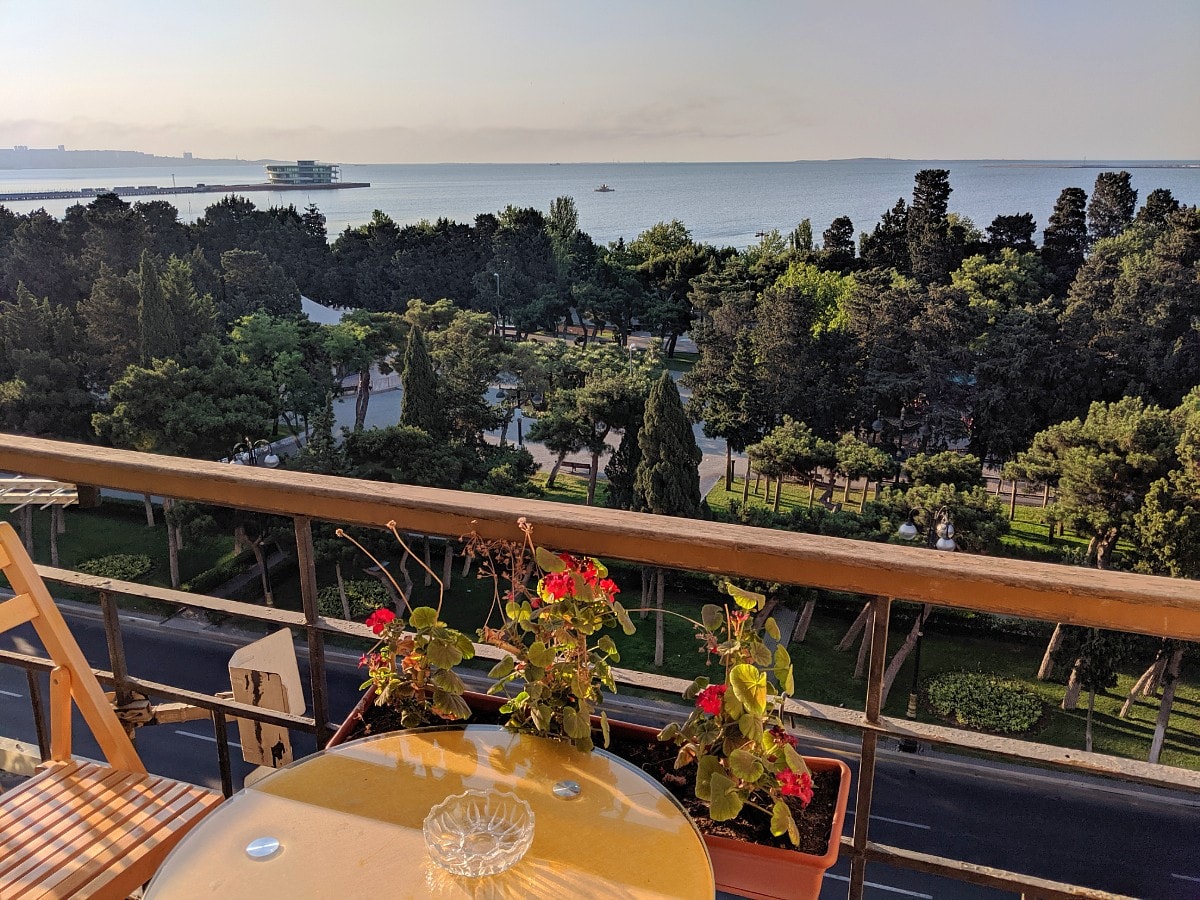
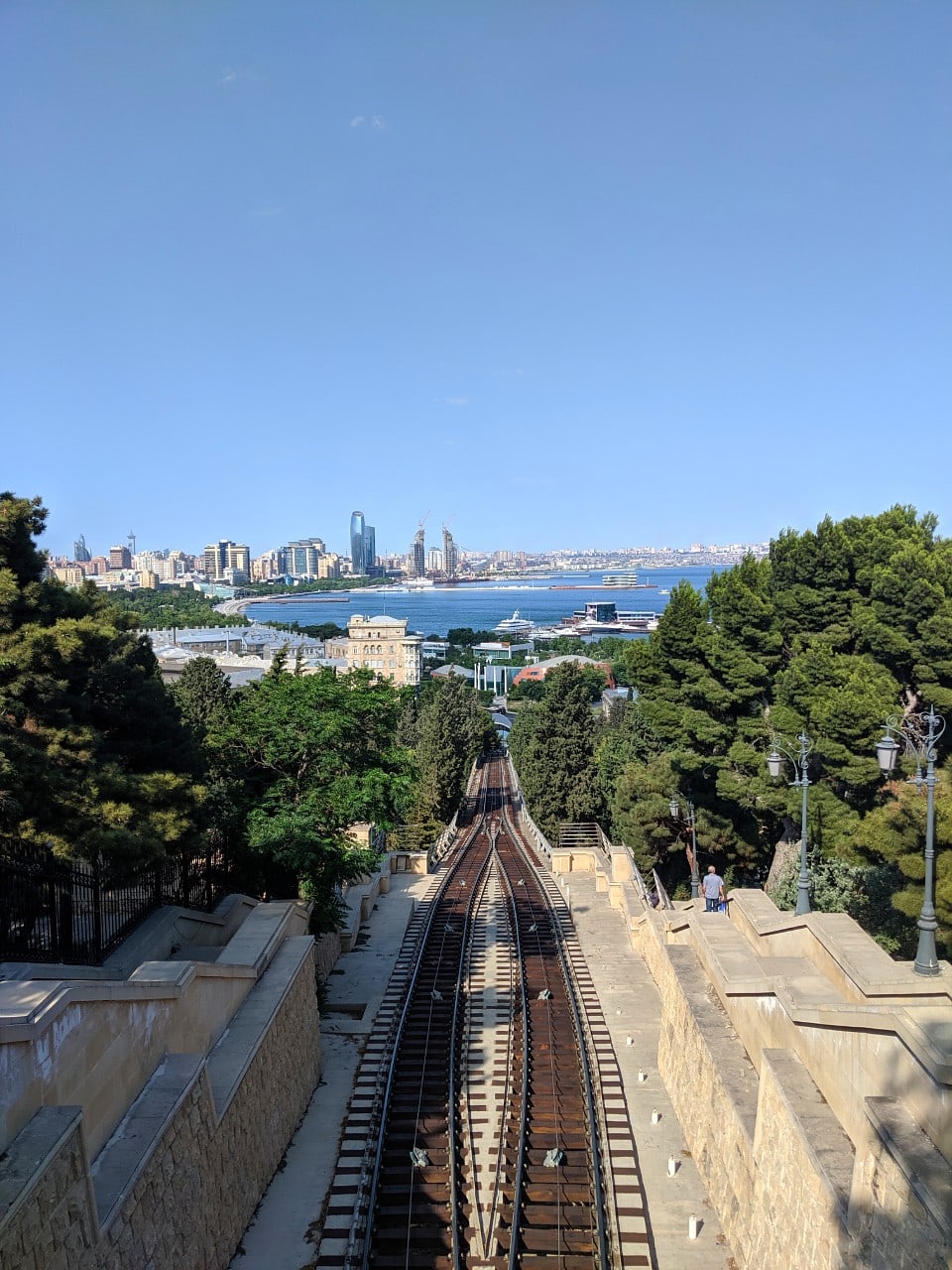
This trio of towers almost 200m tall dominates the skyline of Baku and is both a practical building (office space) and a tourist attraction. At night LED lights built into the towers light up in different colours and create a digital display visible for miles.
Right next to the towers is the beautiful Mehdi Huseyn mosque (Şəhidlər Xiyabanı Məscidi). The juxtaposition of the mosque and towers makes for a beautiful scene. Both buildings are close to the highland park recreation area, a popular spot for locals to stroll and enjoy the sea breezes.
To get to the park, you can walk up a set of stairs with fairly high rises, or take the Funicular. I took the stairs. The whole process of taking the funicular appeared tedious and slow, fun as it might have been.
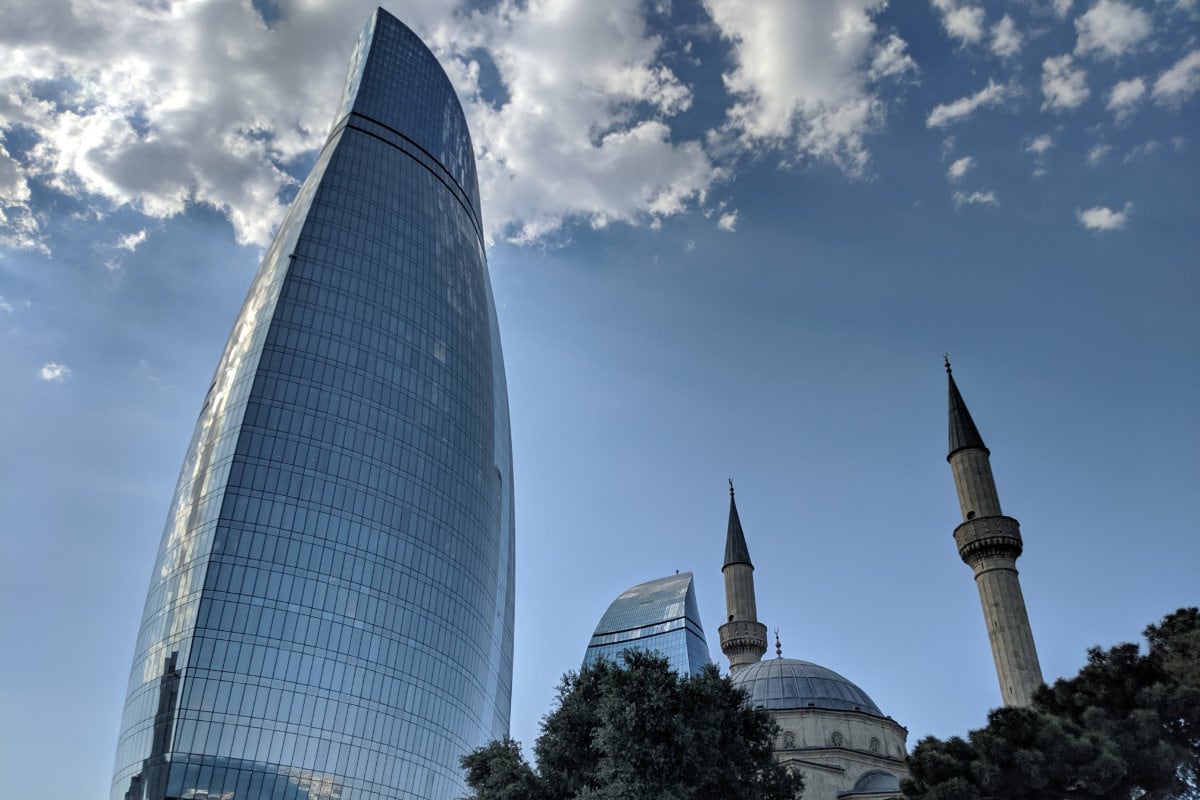
Carpet Museum
I’m not partial to carpets, and while I love history, museums are not always my first choice in a city. So I was surprised to find myself browsing the magnificent tapestries in the Baku Carpet Museum. The fact that this building boasts prime real estate on the Baku promenade shows the importance placed on the history of carpets. Granted, the promenade is wide and very, very long so there’s plenty of space, but that doesn’t take away from the fact that the powers that be want us to know about Azerbaijani carpets.
And while they are all very impressive, I itched to leave after a while. This might be one attraction for the carpet fans.
Impressions of Baku
Baku is a city for strolling and drinking coffee in cafes. The sea isn’t very inviting near the port but the beaches to the north of the Absheron Peninsula are better. This is not the Mediterranean and there is a whiff of oil in the air. The coffee is tasty though. Check out Paris Bistro for some atmosphere and tasty brews.
In stark contrast to neighboring Georgia, the big chains like Starbucks and Hard Rock Cafe, are all here and appear to be doing great business.
As I passed through immigration in Baku Airport on my way back to Tbilisi, the immigration officer asked me if I should have a visa for Georgia. I explained to him about Georgia’s very generous 1-year visa policy for most countries. He smiled and said that he hoped to see the same in Azerbaijan soon. Azerbaijanis are friendly and welcoming. The visa, while inexpensive at around $20, might be a deterrent to last-minute travel plans, budget travelers, and those people that abhor paperwork and bureaucracy. But even a short trip to this welcoming country is worth it.
I don’t know if there’s a ‘best’ time to visit Baku, but I visited in July, and despite the hot, dry climate, the temperature was tolerable. In fact, the breeze from the sea makes the city quite airy.
Expat workers I met on the plane told me that despite Baku being a good place to live, life there can be a bit boring. “Once you’ve eaten in the best restaurants a few times, it starts to get monotonous “, a British expat told me. He also said that while the countryside was beautiful, he rarely visited. He bought a house in Georgia so he could live in Tbilisi for part of the time purely for the convenience of getting some culture and spice in his life.
There’s also a distinct smell of burning oil. At least I think that’s what it is. The smell reminds me of the Greek ferries. An unpleasant smell that nonetheless evokes memories of good times spent around the Greek islands.
Essential Information
Where to stay
Remember that you need to put a hotel address on your visa, but this appears to be a formality. I changed hotel immediately after applying for my visa and it made no difference. As long as you tick all the boxes on the visa form, they’re happy.
Airbnb options are plentiful. I stayed in an incredible apartment, just a few hundred metres from the Old City with a view of the bay. The only downside is that there are more than 10 flights of stairs to climb. I quite enjoyed the exercise but it can be taxing in the heat and after a long day of pounding the pavements.
Other options include the upmarket but amazing value Khaghani Center Hotel or the inexpensive Sahil Hostel & Hotel.
How to get from the airport
The best way to get to the city from the airport in Baku is by bus. Bus timetables are hard to find but you can ask the driver outside the terminal. The bus is very comfortable and air-conditioned. A one-way trip costs around $2. It takes 40 minutes to the city bus depot. From there you will need to take a cab to your hotel.
